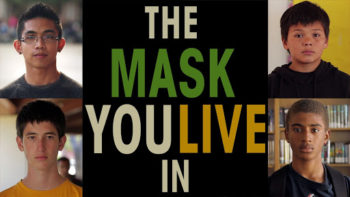Since we first started calling out sexism in Super Bowl ads, advertisers have come a long way when it comes to how they portray women–and our #NotBuyingIt Report has the data to support that claim. Watching Super Bowl LVII, it’s almost hard to believe that just a decade ago the majority of commercials featured sexism and harmful messages about women (65.4% in 2012). With your help, we’ve transformed Super Bowl commercials for the better. Take a look at a few of the Super Bowl 57 ads that scored points with us this year.
What’s VMS?, Astellas Pharma
Could you imagine 10 years ago that there would be a commercial about menopause in the Super Bowl? And that it would be good? With the “Heat on The Street,” Astellas Pharma educates audiences about menopause, specifically VMS (also known as hot flashes and night sweats). It’s an experience half of our country goes through, but it’s rarely highlighted in this way.
Knowing Their Order, McDonald’s
A commercial fit for Valentine’s Day! This ad spotlights couples showing their love for one another through their McDonald’s orders. The concept of the ad is perfectly stated by one of the characters: “Knowing their order is a sign of loving them.” The couples each have a moment to showcase their affection for one another. The ad also features a diverse range of gender, sexuality, race, nationality, age, and ability representation within the couples.
Saving Sawyer, Amazon
Amazon’s ad follows the story of a dog that has been left home alone after his family return to work/school post-pandemic. This commercial scores points with us for the casual portrayal of the father character participating in care work by cooking breakfast and dinner. As Fair Play reminds us, women continue to do the majority of unpaid care work. It’s important to depict men participating in, and being competent at, this work.
Hold Music, Bud Light
How many of us are familiar with the sexist “Go get me a beer” convention, perpetuating the idea that women belong in the kitchen and are meant to serve the men in their lives? Bud Light’s “Hold” commercial rejects this gendered trope/stereotype. The ad subtly flips the script with Miles Teller bringing his wife, Keleigh Sperry, a beer.
The Next Giant Leap, Xfinity
The popular cultural image of a gamer is typically boys and men, despite women and girls making up 41.5% of gamers in the United States. Girls are gamers too! Xfinity’s ad shows five teens, three of which are girls, schooling video game characters on the wonders of gaming with Xfinity. Our only note is that the commercial ends with “one giant leap for mankind.” It would have been easy, but still recognizable, to swap “mankind” for “humankind.”
While these commercials showcase the progress since 2012, there is still room for improvement especially when it comes to intersectional representation. We analyzed representations of gender, race, sexuality, ability, age, and body size in commercials while the game was airing and found:
- Men outnumber women in ads nearly 2-to-1.
- Less than 1% of prominent characters were portrayed with a disability, and only 1-in-5 of those characters were women.
- Only 2.1% of characters were LGBTQ+, and that vast majority were men.
- Only 3.2% of women prominently featured in ads had a large body type.
- Only 12.5% of prominent characters were 50+, and just 1-in-3 of those characters were women.
Women represent half of the U.S. population, half of the Super Bowl viewership, and the majority of consumer power in the country. Advertisers have finally started to recognize this, but they have more work to do!
Take Action! Help us continue to call out advertising year-round with the hashtags #MediaWeLike when an ad gets representation right and #NotBuyingIt when it misses the mark.




